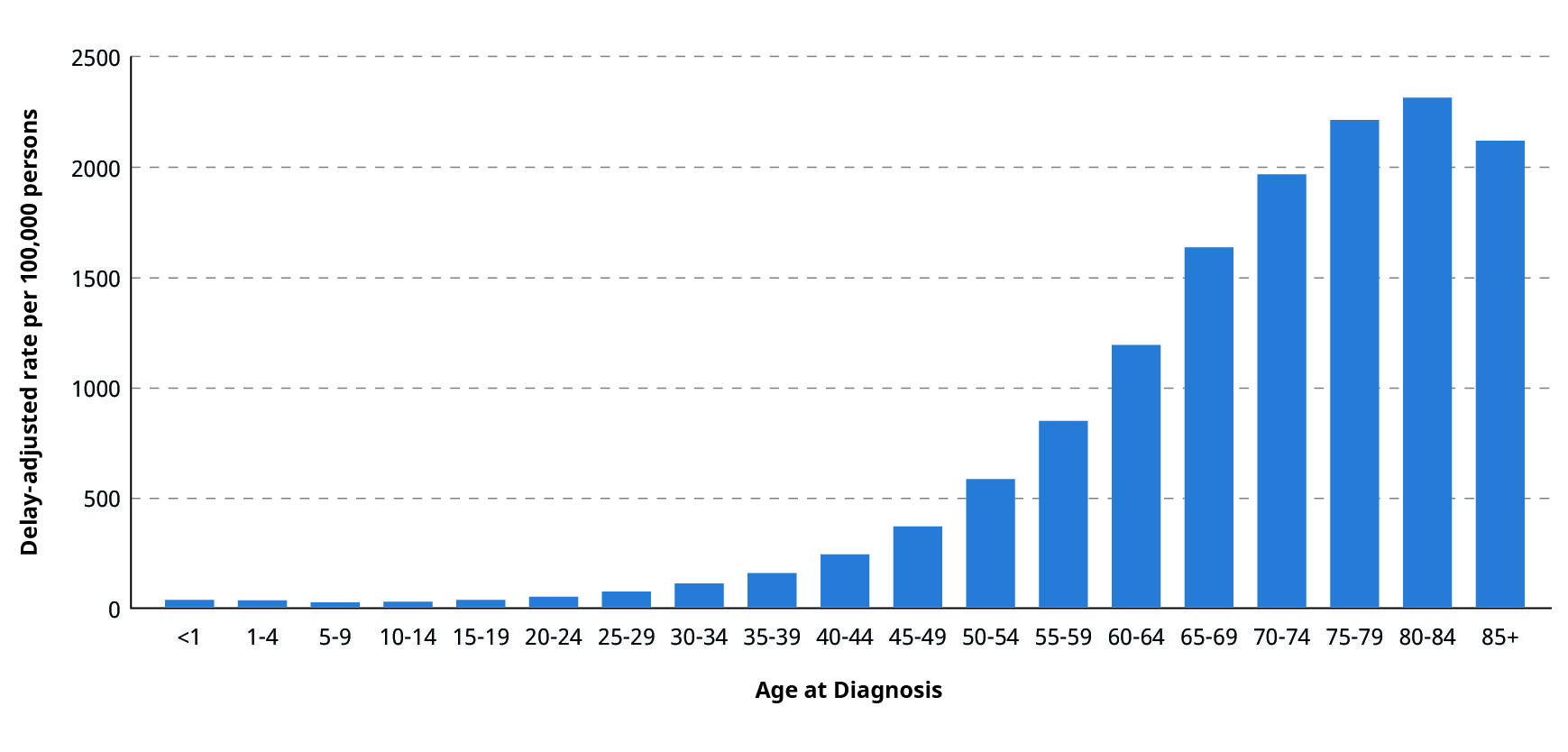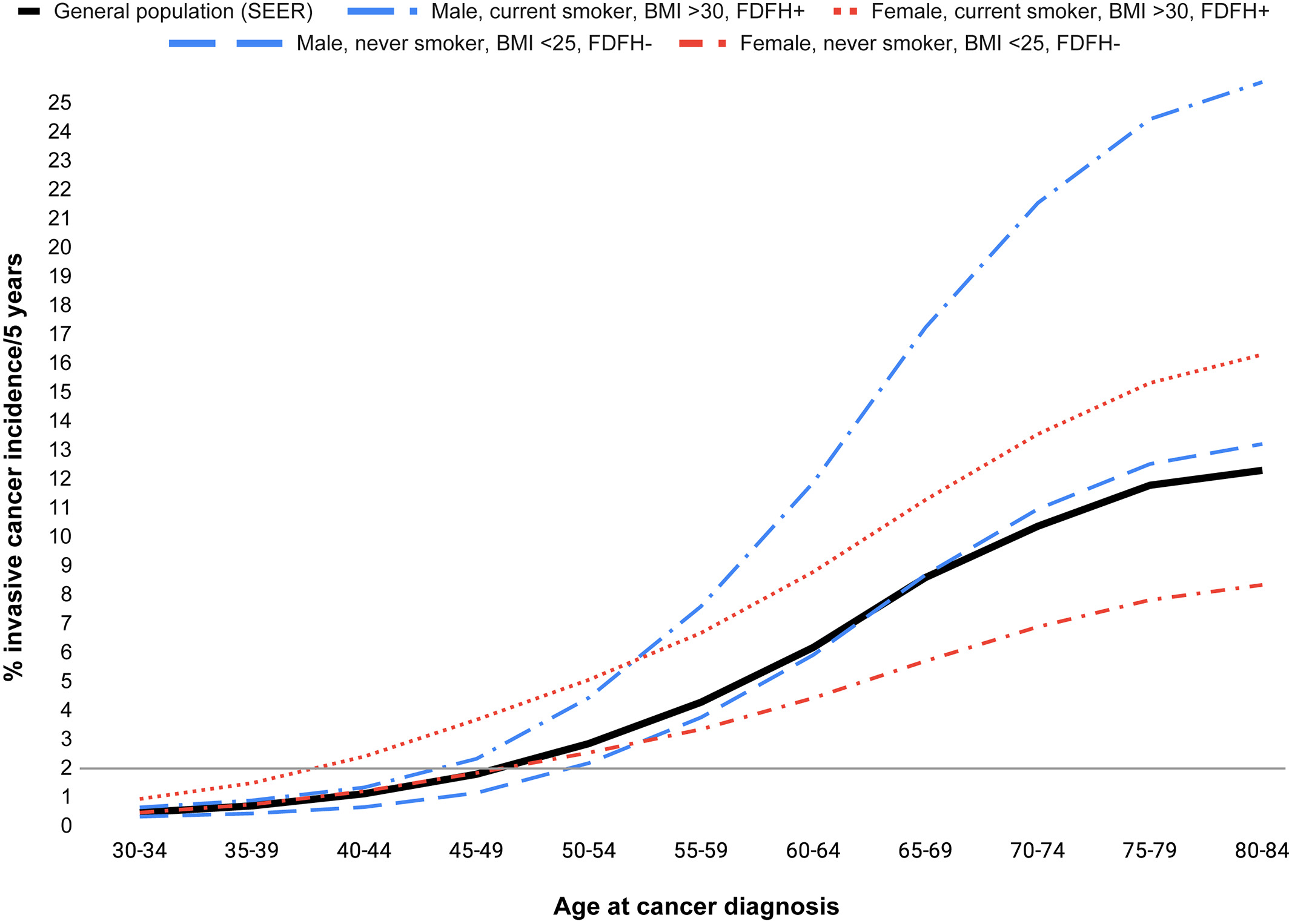
By using multi-cancer early detection, GRAIL’s Galleri® test can improve the health and longevity of policyholders with an elevated cancer risk
Cancer often strikes in what appears to be a random fashion; however, this is not always the case. Maybe it’s a relatively young person with no apparent risk factors. They eat right and exercise regularly. Yet despite this person’s age and healthy lifestyle choices, he or she is still diagnosed with cancer. It’s easy to look at a situation such as this and assume that risk factors are meaningless. Yet nothing could be further from the truth.
Today there are several known cancer risk factors, from advancing age to an individual’s own personal health care and lifestyle choices. This means some policyholders have a greater risk of developing cancer than others. In this article, we take a closer look at cancer risk factors to identify which policyholders are at greater risk. From there, we’ll introduce Galleri®, a multi-cancer early detection (MCED) test from GRAIL, LLC (“GRAIL”), describing how it creates an opportunity to improve mortality by bringing this revolutionary test to the life insurance industry.
Cancer risk factors


Body mass index (BMI) is another important risk factor. BMI is a measure of body fat based on height and weight. Females with a BMI greater than or equal to 30 and males with a BMI greater than or equal to 35 have a higher risk of developing cancer. According to research from the American Cancer Society, excess body weight is thought to be responsible for about 7% of all cancer deaths in the United States. Along the same lines as BMI, poor nutrition, heavy drinking, and a sedentary lifestyle are additional cancer risks.
Personal or family history of cancer is another important cancer risk factor. In terms of personal history, survivors of cancer are unfortunately not shielded from cancer forever, despite beating it once. While there is always a risk that the cancer will reoccur, survivors of cancer also have a greater risk of developing additional cancers in their lifetime. Individuals with first-degree relatives or multiple family members who have been diagnosed with cancer are more likely to develop cancer themselves. Indeed, some cancers are hereditary, meaning that a genetic mutation is passed on to future generations. Several hereditary conditions can raise the risk of developing cancer, and some significantly so. It is estimated that upto 10% of diagnosed cancers are associated with an inherited cancer gene.1 However, this is much less common than the other risk factors previously mentioned, such as advancing age, smoking, and being overweight.


How can we prevent cancer death?
Individuals have control over some cancer risk factors—but not all of them. They can refrain from or stop smoking and maintain a healthy weight through regular exercise and a proper diet.2,3 However, advancing age, which is the most important risk factor, cannot be controlled. This is why it is critical to use modern technology with cancer screenings and early detection tools.
For starters, individuals can commit to regular health checkups and FDA-recommended cancer screenings such as a mammogram and colonoscopy. Individuals are encouraged to engage their health care providers and start cancer screening as soon as it is appropriate.
Early detection of cancer through screening has been shown to reduce mortality from cancers of the breast, colon, cervix, prostate, and lung. For example, among those meeting screening criteria and undergoing the testing, deaths rates from breast and colorectal cancer decreased by 20-30%.5,6,7 For cervical cancer, the mortality reduction was approximately 50% with screening.8 While these traditional screenings are effective, they are typically limited to these five types of cancer. However, there are more than 100 other known types of cancer, and many of them go undiagnosed until it’s too late to prevent death. In fact, 71% of cancer deaths result from cancers with no recommended screening. What if there was a way to detect most of the other cancer types?
The Galleri® test can help policyholders with high cancer risk

Life insurers can improve cancer mortality by offering the Galleri® test

The Galleri® test is a potential life-saver, and that’s an obvious incentive for insurers. The future mortality savings associated with reduced cancer mortality can be significant for life insurers. It can outweigh the cost of offering a one-time test, according to a cost-benefit analysis done by Munich Re Life US. The mortality savings can vary by age, gender, product type, and are greater for high cancer risk individuals. For example, the mortality savings for a policyholder who smokes is on average two times more than a non-smoker policyholder, due to the increased cancer risk associated with smoking. This demonstrates that mortality savings from using the Galleri® test can be significant for policyholders with an elevated risk of cancer.
While saving lives is the number one incentive for offering the Galleri® test to policyholders, there are additional benefits beyond the mortality savings for insurers, including new sales growth in competitive distribution channels, policyholder retention, and stronger brand positioning. To learn more about the benefits of integrating Galleri® into your suite of policyholder benefits, read our article titled, Changing the Future of Cancer Mortality.
Join us in the fight against cancer
Life insurance carriers, distributors, and reinsurers alike have a tremendous opportunity to be at the forefront of this effort to help save lives. We believe life insurance companies in the private sector can play a significant role in enabling access to life-changing technologies such as the Galleri® multi-cancer early detection test. By shifting our role in the lives of policyholders and their families to promote health and longevity, we can change how we are perceived while improving the future of cancer mortality. Together, we can make a significant difference. We hope you’ll join us in the fight against cancer.
Companies interested in learning more about Galleri® and about offering Galleri® to their policyholders should reach out to Munich Re Life US directly. Munich Re Life US and GRAIL have created a full suite of educational materials and processes to simplify program integration for you and your teams.
Important Safety Information
Galleri® is recommended for use in adults with an elevated risk for cancer, such as those aged 50 or older. Galleri® does not detect all cancers and should be used in addition to routine cancer screening tests recommended by a healthcare provider. Galleri® is intended to detect cancer signals and predict where in the body the cancer signal is located. Results should be interpreted by a healthcare provider in the context of medical history, clinical signs, and symptoms. A test result of “Cancer Signal Not Detected” does not rule out cancer. A test result of “Cancer Signal Detected” requires confirmatory diagnostic evaluation by medically established procedures (e.g., imaging) to confirm cancer. If cancer is not confirmed with further testing, it could mean that cancer is not present or testing was insufficient to detect cancer, including due to the cancer being located in a different part of the body. False positive (a cancer signal detected when cancer is not present) and false negative (a cancer signal not detected when cancer is present) test results do occur. Galleri® is prescription only.
Laboratory/Test Information
GRAIL’s clinical laboratory is certified under the Clinical Laboratory Improvement Amendments of 1988 (CLIA) and accredited by the College of American Pathologists (CAP). Galleri® was developed, and its performance characteristics were determined by GRAIL. Galleri® has not been cleared or approved by the U.S. Food and Drug Administration. GRAIL’s clinical laboratory is regulated under CLIA to perform high-complexity testing. Galleri® is intended for clinical purposes.
Contact the Authors
/Gina%20Guzman.jpg/_jcr_content/renditions/original./Gina%20Guzman.jpg)
/Brad%20Heltemes.jpg/_jcr_content/renditions/original./Brad%20Heltemes.jpg)
/Alex%20Yang.jpg/_jcr_content/renditions/original./Alex%20Yang.jpg)

Newsletter
properties.trackTitle
properties.trackSubtitle